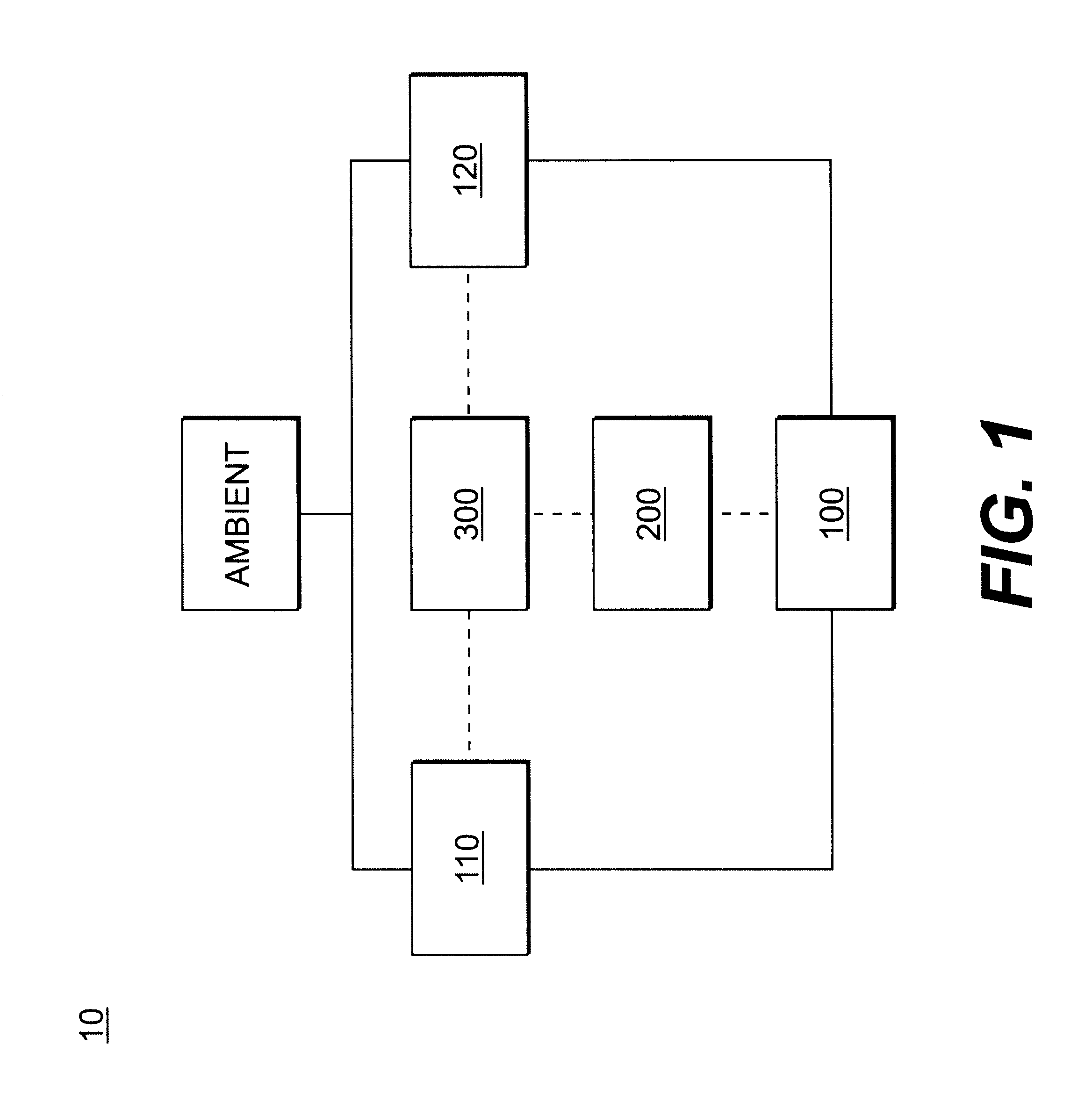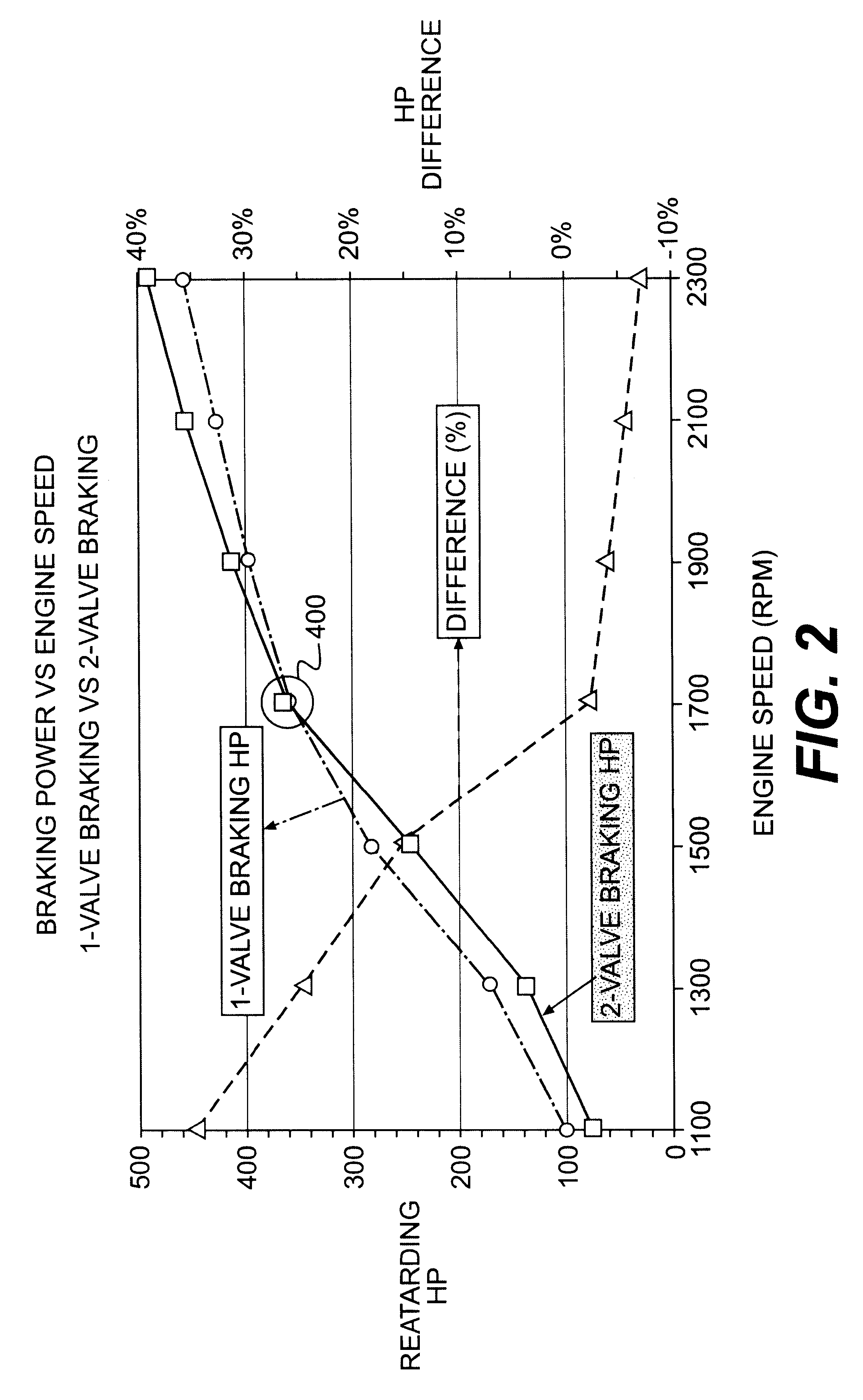Method and system of improving engine braking by variable valve actuation
a variable valve and actuation technology, applied in the direction of valve drives, non-mechanical valves, electrical control, etc., can solve the problems of ineffective realization of sophisticated control,/or magnitude of engine valve lift, and difficulty in adjusting the timing of engine valve li
- Summary
- Abstract
- Description
- Claims
- Application Information
AI Technical Summary
Benefits of technology
Problems solved by technology
Method used
Image
Examples
second embodiment
FIG. 6 is an example of the present invention, in which like elements to those in FIG. 5 are referred to with like reference numerals. The valve actuation system 2100 provides a fluid linkage 2130 between a master piston assembly 2120 and a slave piston assembly 2140. When isolated, the fluid linkage 2130 serves as a hydraulic link between the two piston assemblies so that motion of the master piston 2120 will transfer to the slave pistons 2141 and 2142. A trigger valve 2195 is provided to control the link between the master and slave pistons. A cams haft 20 is also provided. The cams haft includes various cam lobes capable of contacting the master piston.
Under normal operation, the trigger valve 2195 is open. The cams haft 20 turns in response to engine operation. The various cam lobes contact the master piston roller follower 2121 which in turn displaces the master piston. When the master piston assembly 2120 moves in response to a lobe of the cam 20, the oil volume displaced is a...
third embodiment
FIG. 7 is an example of the present invention, in which like elements to those in FIGS. 5 and 6 are referred to with like reference numerals. A high pressure pump (not shown) would supply sufficient pressure to open the engine valves (typically 4000 psi). The trigger valve 2195 would normally be in the closed position, and the engine valves (not shown) would be closed.
To open the engine valves, an electrical signal is sent to the trigger valve 2195. Upon receiving the appropriate signal, the trigger valve 2195 opens. High pressure fluid (typically engine oil) passes from fluid linkage 2180 through the trigger valve 2195 and into fluid linkage 2130. The high pressure fluid may be blocked from proceeding through bypass line 2147 to the second slave piston 2142 by inline check valve 2146. As pressure increases in the system, the force of the oil overcomes the force of the engine valve springs (not shown) and cylinder pressure, and moves the first slave piston 2141 downward, opening the...
PUM
 Login to View More
Login to View More Abstract
Description
Claims
Application Information
 Login to View More
Login to View More - R&D
- Intellectual Property
- Life Sciences
- Materials
- Tech Scout
- Unparalleled Data Quality
- Higher Quality Content
- 60% Fewer Hallucinations
Browse by: Latest US Patents, China's latest patents, Technical Efficacy Thesaurus, Application Domain, Technology Topic, Popular Technical Reports.
© 2025 PatSnap. All rights reserved.Legal|Privacy policy|Modern Slavery Act Transparency Statement|Sitemap|About US| Contact US: help@patsnap.com



